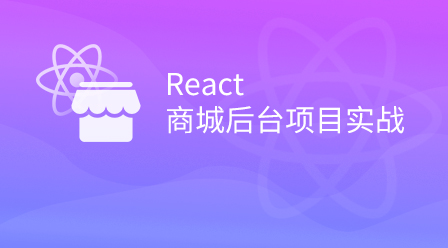在javascript中实现倒计时可以使用setinterval、date对象、settimeout等方法。1. 使用setinterval进行基本倒计时。2. 使用date对象和settimeout实现更精确的倒计时。3. 确保清理定时器以避免内存泄漏。4. 使用requestanimationframe优化视觉效果。5. 批量更新dom以提高性能。6. 采用模块化设计增强可维护性和可扩展性。

在JavaScript中实现倒计时是一项常见的任务,尤其是在构建计时器、倒计时页面或限时促销时非常实用。让我们从最基本的实现开始,然后深入探讨一些高级用法和优化技巧。
让我们从一个简单的倒计时函数开始吧。这是一个基础的计时器,设定时间后会每秒减少,直到达到零。
function countdown(seconds) {
const interval = setInterval(() => {
if (seconds > 0) {
console.log(seconds);
seconds--;
} else {
console.log("Time's up!");
clearInterval(interval);
}
}, 1000);
}
countdown(5);这个简单的倒计时函数使用了setInterval来每秒更新倒计时值。这样的实现直观且易于理解,但它也有其局限性,比如无法精确控制时间,因为setInterval的执行可能因为其他任务而延迟。
立即学习“Java免费学习笔记(深入)”;
如果你想让倒计时更加精确,可以考虑使用Date对象来计算时间差,这样能更好地控制时间的流逝。
function preciseCountdown(endTime) {
const updateCountdown = () => {
const now = new Date().getTime();
const distance = endTime - now;
if (distance < 0) {
console.log("Time's up!");
return;
}
const seconds = Math.floor((distance % (1000 * 60)) / 1000);
console.log(seconds);
setTimeout(updateCountdown, 1000);
};
updateCountdown();
}
const endTime = new Date().getTime() + 5000; // 5 seconds from now
preciseCountdown(endTime);这种方法使用setTimeout来确保每秒更新一次,这样可以更好地控制时间的精度。然而,这种方法需要更多的代码来管理时间差和更新逻辑。
现在,让我们来讨论一下在实际应用中可能会遇到的问题和一些优化技巧。
在实现倒计时功能时,常见的错误包括没有正确清理定时器,这可能会导致内存泄漏。确保在不需要时清除定时器非常重要。
let timerId;
function startCountdown(seconds) {
timerId = setInterval(() => {
if (seconds > 0) {
console.log(seconds);
seconds--;
} else {
console.log("Time's up!");
clearInterval(timerId);
}
}, 1000);
}
function stopCountdown() {
if (timerId) {
clearInterval(timerId);
timerId = null;
}
}
startCountdown(10);
// 稍后可以调用 stopCountdown() 来停止计时此外,在用户界面中展示倒计时时,确保倒计时的显示不会卡顿。可以考虑使用requestAnimationFrame来优化视觉效果。
function smoothCountdown(seconds) {
let startTime = null;
function update(time) {
if (!startTime) startTime = time;
const elapsed = time - startTime;
const remaining = Math.max(0, seconds - Math.floor(elapsed / 1000));
if (remaining > 0) {
console.log(remaining);
requestAnimationFrame(update);
} else {
console.log("Time's up!");
}
}
requestAnimationFrame(update);
}
smoothCountdown(5);这种方法利用了浏览器的渲染循环,可以确保倒计时的更新与屏幕刷新同步,提供更平滑的视觉效果。
最后,在性能优化方面,避免频繁的DOM操作是一个关键点。如果你需要更新倒计时在页面上的显示,考虑批量更新而不是每次计时器触发时都更新DOM。
function optimizedCountdown(seconds) {
let remaining = seconds;
const interval = setInterval(() => {
if (remaining > 0) {
remaining--;
updateDisplay(remaining);
} else {
console.log("Time's up!");
clearInterval(interval);
}
}, 1000);
}
function updateDisplay(seconds) {
// 假设有一个DOM元素用于显示倒计时
document.getElementById('countdown').textContent = seconds;
}
optimizedCountdown(10);在实际应用中,确保你的倒计时逻辑是可维护和可扩展的。考虑使用模块化设计,将倒计时逻辑封装在一个独立的模块中,这样可以更容易地进行测试和重用。
const Countdown = {
start: function(seconds, callback) {
let remaining = seconds;
const interval = setInterval(() => {
if (remaining > 0) {
callback(remaining);
remaining--;
} else {
callback(0);
clearInterval(interval);
}
}, 1000);
return interval;
},
stop: function(intervalId) {
clearInterval(intervalId);
}
};
const intervalId = Countdown.start(10, (seconds) => {
console.log(seconds);
});
// 稍后可以调用 Countdown.stop(intervalId) 来停止计时通过这种方式,你可以更灵活地管理倒计时逻辑,并在不同的上下文中重用它。
总之,JavaScript中的倒计时实现可以从简单到复杂,关键在于根据具体需求选择合适的方法。无论是基本的setInterval还是更精确的Date对象使用,都要注意性能优化和错误处理,以确保倒计时的稳定性和用户体验。
以上就是如何在JavaScript中实现倒计时?的详细内容,更多请关注php中文网其它相关文章!

每个人都需要一台速度更快、更稳定的 PC。随着时间的推移,垃圾文件、旧注册表数据和不必要的后台进程会占用资源并降低性能。幸运的是,许多工具可以让 Windows 保持平稳运行。




Copyright 2014-2025 https://www.php.cn/ All Rights Reserved | php.cn | 湘ICP备2023035733号